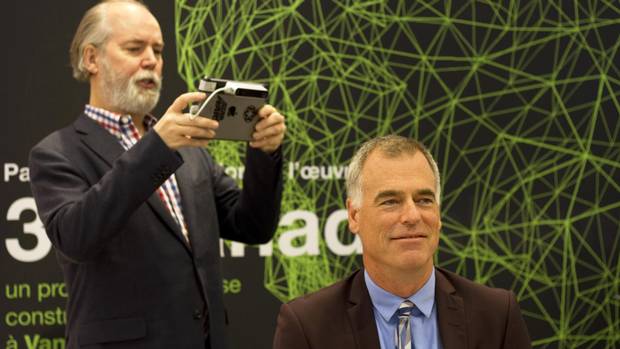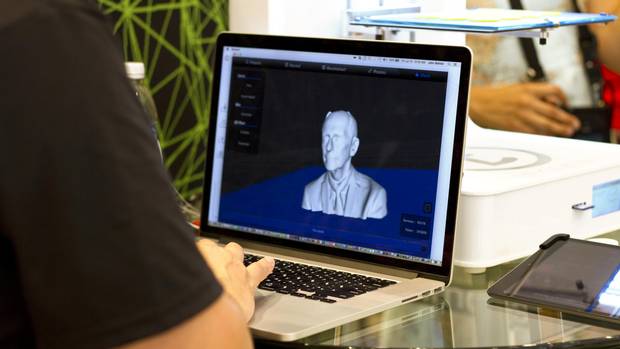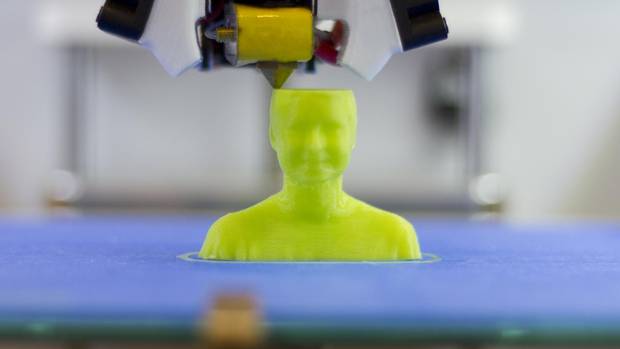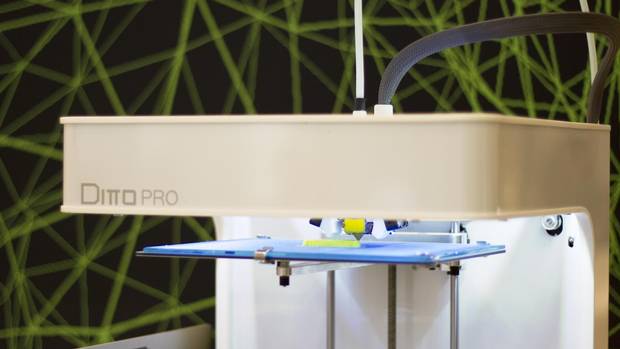As many ponder retail's future, Quebec-based brand Simons is pushing the boundaries of what a bricks-and-mortar space can offer. With stores now in seven cities across Canada, CEO Peter Simons has collaborated with Vancouver artist Douglas Coupland and 3-D-printing expert John Biehler on a mega portraiture project. 3-D Canada is a cross-country effort that began at the Simons store in Quebec City last summer and is making its way across the country, with its next stop at the newly opened Rideau Centre location in Ottawa on Oct. 29. Simons is hosting 3-D scanning and printing booths in its stores in an effort to immortalize customers; the project will culminate in some 1,500 busts that will be showcased in 2019 at Simons's forthcoming Yorkdale location in Toronto. I spoke with Coupland, a multi-media innovator who was named to the Order of Canada in 2013, about the ambitious project, what it means to Canadians, and picked up his advice on how to safeguard ourselves from what the future may hold.
I can understand why your collaboration with Simons has been inspiring. Peter Simons is quite a visionary himself, and has a great appreciation of art.
Simons commissioned a big sculpture from me for the store they opened in West Vancouver, not far from where I live. Peter was in the studio and noticed a 3-D printer in the corner and wanted to know how it worked. "You scan them and print them out," I said. "So this is basically the future of portraiture isn't it?" he asked. I said, "Yes, it is." You have to remember that within a year and a half or two years, all the iPhones and androids are going to have built-in scanners and pretty good ones at that. So every teenager on earth is going to have a scanner and the price of printers is collapsing. We're about to enter this new universe that everyone is calling the phygital – the physical and digital – and I think Peter just thought, "Okay, what is this new universe? What does it look like? Lets get Simons in on it." That kind of patron doesn't come around too often.

Douglas Coupland scans Peter Simons, and a printer will recreate his image.
We're shopping in such different ways now. How do you feel about modern retail? And what do you think your project might do for the in-store customer experience?
I think if you want to succeed in any kind of retail store, it has to have a touch of Christmas morning to it. There has to be that feeling of, "Ooh! What will I find at the bottom of the stairs?" That's the sort of magic that retailers really need to stoke the fires with. When we did these scans in the store – we did some publicity beforehand – the first people in the door were from 70 to 80. And they're like, "I don't know what a scan is but I want one!" And you get families saying, "Wow, this is my chance to get entire family portraits done!" But other people come in and they're just very curious. I think for almost every person we've done, this is their first exposure to 3-D printing. In 2090, I want people to be saying, "I remember the first time I saw a scanner and it was at Simons in 2016 and I knew that it was the future."
I imagine that everyone's going to want in on this. What has the reaction been like so far?
Because of the time it takes to do the scans, we really are limited to about 150 people per event. There was one in Vancouver and this kid was crying [because] we ran out of time and he wasn't going to be able to do it, so we snuck him in the line. You can just see it in their eyes… like, "I want to be part of this!" By the way, what we have found is that people with cool hair are lot more fun to scan and print out. We're trying to find someone with a mohawk. Not many people have mohawks anymore.
With technology developing as quickly as it is, are you worried that this may seem old-fashioned before the project is all said and done?
I thought of that. Even since we began the project, the software's gotten better, the machines have gotten better, the filament used to print is more durable and sophisticated. Maybe in 20 years we'll look back on this and say, Wow, these people had these machines and all they did was make heads and wedding toppers. They didn't realize that you could do blank with it, or whatever. I think it's going to be an absolutely perfect snapshot of Canada at this exact moment in history.

A scan appears on a computer screen, which will tell the computer what to print in 3-D.
You're always pushing boundaries. Do you ever scare yourself by the trails that you blaze?
What I've learned is that it gets harder to bring new people into your life as you get older. And I find that unless I keep doing new projects in different realms, life gets very static, very quickly. Basically the happiest year of my life was third-year art school and I've tried to model my life after that one year. But it never works.
Why was that such a happy year for you?
I had my own studio in a wood- working shop, I did the school newspaper, I was on the student society and every part of my brain was being used. It was a great experience. I want to use all my brain while I still have it. I want to continue being curious about everything in the world.

The 3-D printer at work, scanning Peter Simons.
You're really one of the few artists in this country who has managed to remain true to himself and have a commercially viable career. What would you say to other artists who wish they could do the same?
I wouldn't limit it to just artists – I'd say for everybody – the question I get most is: How do I vaccinate myself against the future? Like, who knows what they're going to invent next week, next year, five years from now. How do I not end up being roadkill in all of this? The answer to that is, figure out what it is that you actually enjoy doing – making pancakes, making shoes, chopping tree branches – and that's what you should be doing. Because it doesn't matter what kind of technology they come up with, you're always going to enjoy what you're doing with it. Money doesn't buy you happiness. It buys you freedom to a certain point but after that it's not necessarily the best thing. Just lock into what it is that you love doing. I think fascination will keep you safe in the future, no matter what the future is.
Do you think it's a good time for this country and its culture?
I am of the belief that right now is always the best time to be alive. I think we're going to look back and see that 2016 was a real high-water mark in Canadian history. We made some difficult choices, but we followed through on them. People look at Canada and think, Well at least someone's got it right. It's just a vitality and a sense of freedom in the air that doesn't exist anywhere else on Earth. And being Canadian now is not about being a version of American or being colonial. We know who we are and we know what we stand for, and that's so exciting.
